This foraging guide is designed to help identify edible mushrooms (fungi) and their poisonous lookalikes growing in the UK. This backs up information given on foraging courses led by The Foraging Course Company. Mushrooms (fungi) are listed alphabetically by common name.
These online guides are a new feature, so are constantly expanding. Keep checking back for more as the season progresses!
When foraging for food, it is vital that you are 100% sure of your identification.
CLICK HERE TO BUY EDIBLE MUSHROOMS ONLINE IN THE UK
Looking to expand your culinary palate? Exploring different types of edible mushrooms is a great way to do it. Here are 39 fungi worth hunting down.

They aren’t plants. They don’t come from animals. They are, basically, the only multi-celled fungus we eat that doesn’t play a part in fermentation.
Another thing that makes edible mushrooms unique? The sheer number of species there are in the world.
If you are interested in learning more about these special culinary fungi, then we have just the list for you. Below are 39 different types of edible mushrooms. Some of them you will probably recognize, but most of them, you’ve likely never heard of
39 Edible Mushrooms You Should Know
A handful of the mushrooms featured below can be found at your local grocery store. Others must be purchased at specialty markets. And still others, you’ll have to strap on your galoshes and head to the woods if you hope to find them.
If you do decide to take the more adventurous route, be sure you know what you’re doing. Many mushrooms look similar and not all are edible. Even some on the list below can be dangerous if not prepared properly.
But when they are harvested and prepared correctly, these strange fungi make surprisingly good additions to a wide variety of meals.
Bay Bolete Mushroom
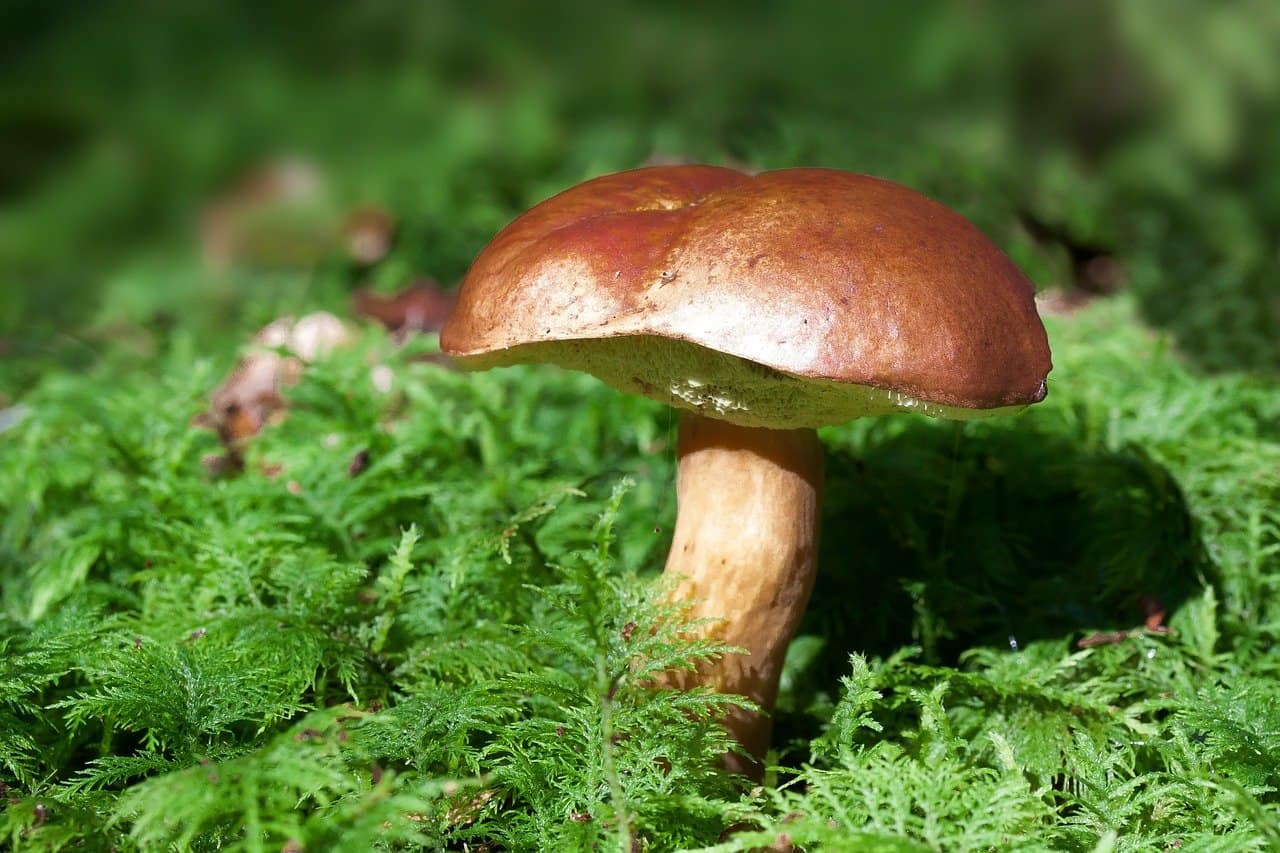
A distant relative of the more commonly known porcini, the Bay Bolete mushroom has a mild flavor. It is a common sight at Mexican markets surrounding Izta-Popo Zoquiapan National Park, where it is frequently harvested. Young mushrooms can be eaten raw, older individuals are great for drying, and any form is delicious when cooked in vegan butter.
CLICK HERE TO BUY MICRODOSE IN THE UK
Black Trumpet Mushroom
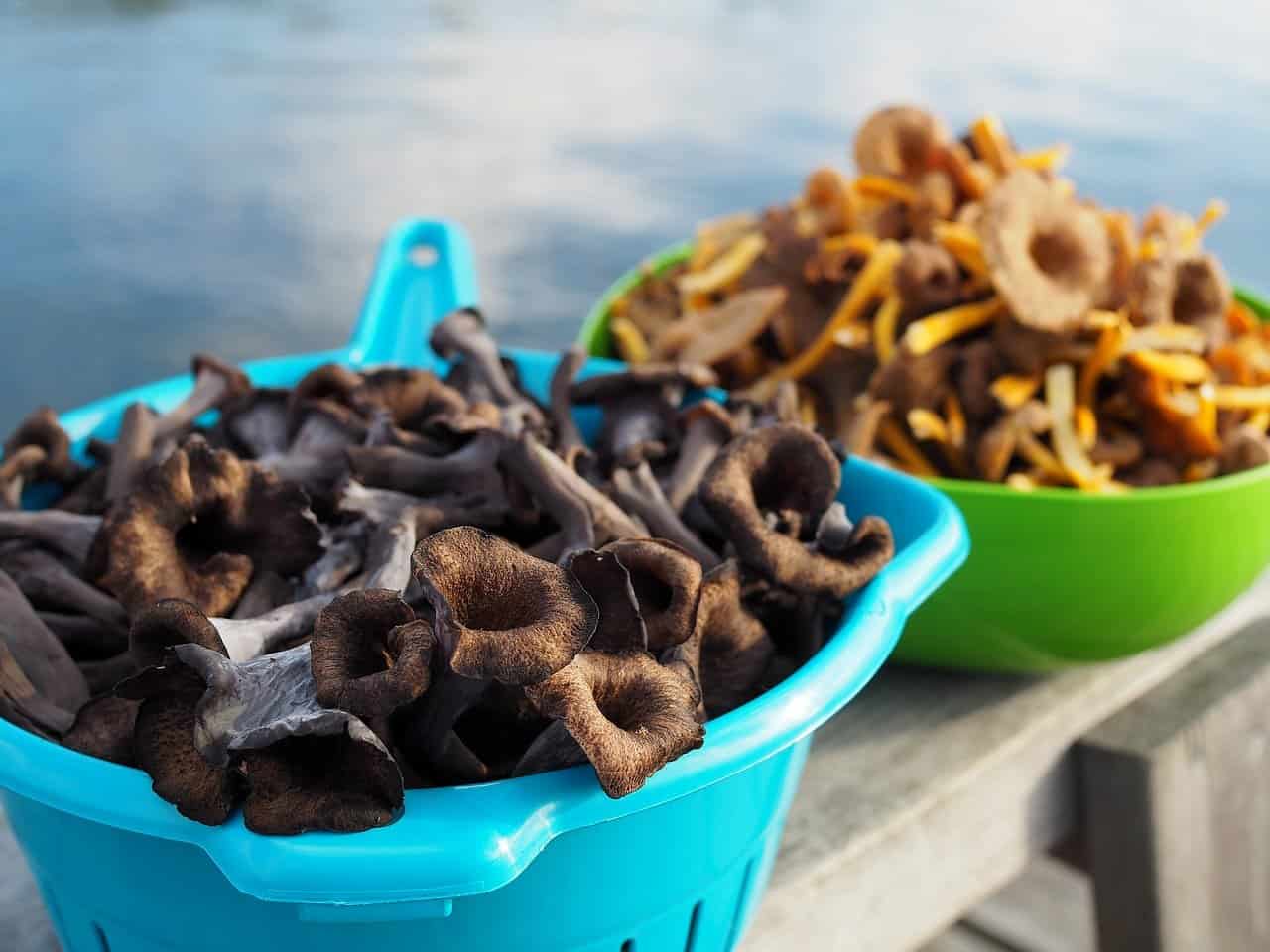
The funnel-shaped Black Trumpet mushroom is highly sought after despite it’s less attractive appearance. It is packed with protein and contains sugar-alcohols that give it a sweet taste but with a lower net carb count than many sweet vegetables. Dried black trumpets can be crumbled onto dishes as a condiment while fresh forms are perfect for use in both desserts and savory meals.
Button Mushroom
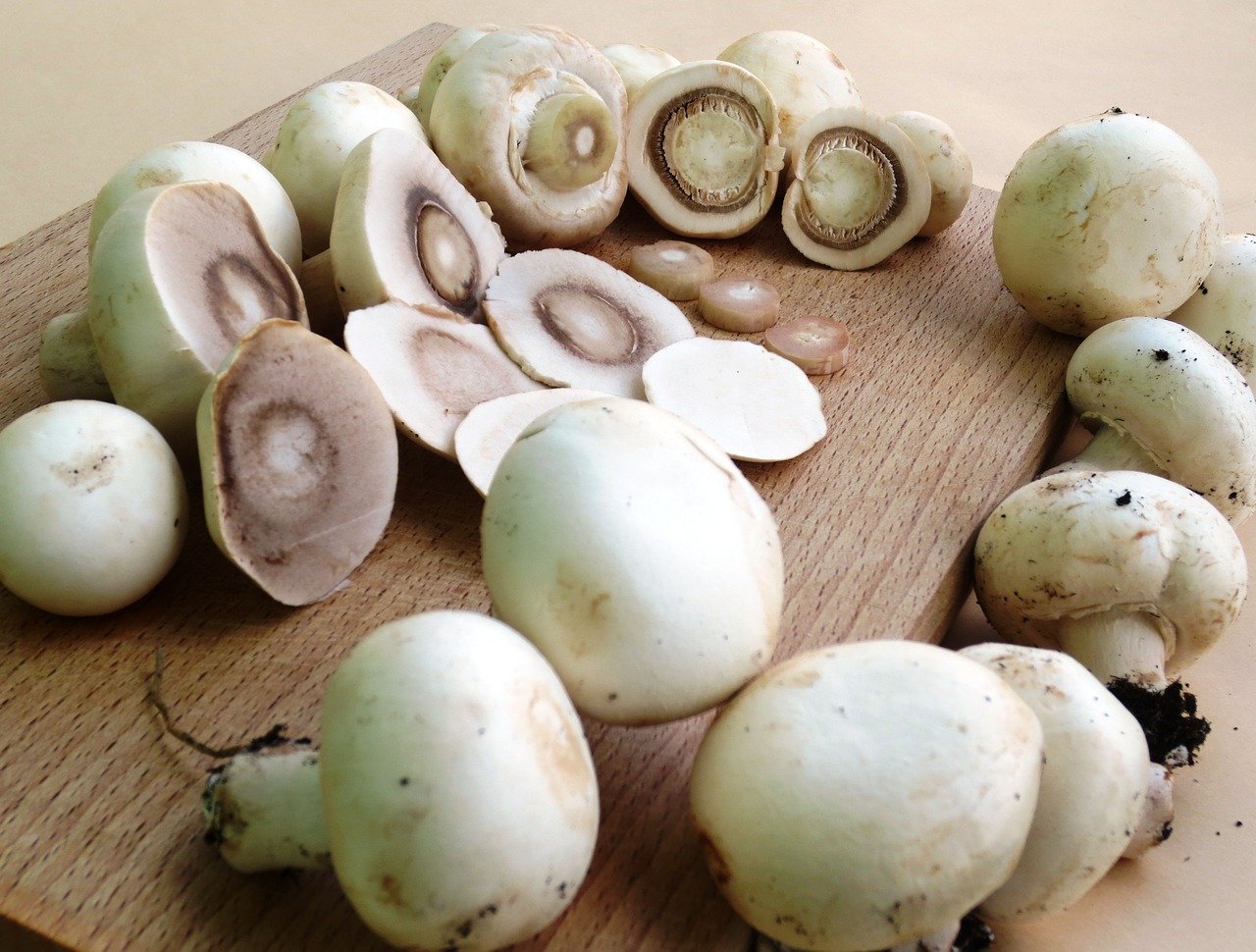
One of the most commonly used mushrooms around the world, the white Button mushroom has a mild taste that easily adapts to the flavors of any spicy or savory dish. They were first successfully cultivated in the late 1800s but at the time all specimens were brown in color. A few decades later, a chance mutation created a single white mushroom that caught the attention of growers and consumers alike.
Caesar’s Mushroom
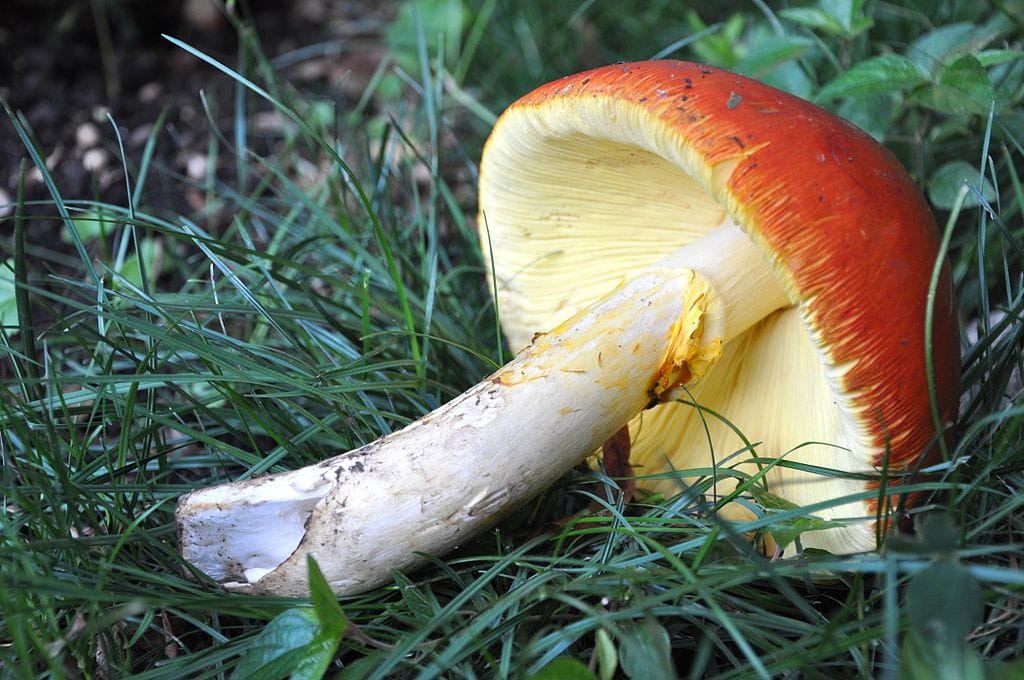
As the name suggests, the history of the Caesar’s mushroom goes back a way. It is native to Southern Europe and Northern Africa and was a favorite of the Roman nobility. It is most commonly eaten in the juvenile button stage. In Italy, it is often prepared raw with oil and salt but is also quite delicious when fried with spices.
Cauliflower Mushroom

The Cauliflower mushroom may be one of the most beautifully ugly fungi out there. They can reach huge sizes and, with all those crevices, can be quite the project to clean up, but the flavor is worth it. They pair well with red meats and are excellent in soups where they absorb the flavor of the broth and take on the texture of thin egg noodles.
Chanterelle Mushroom
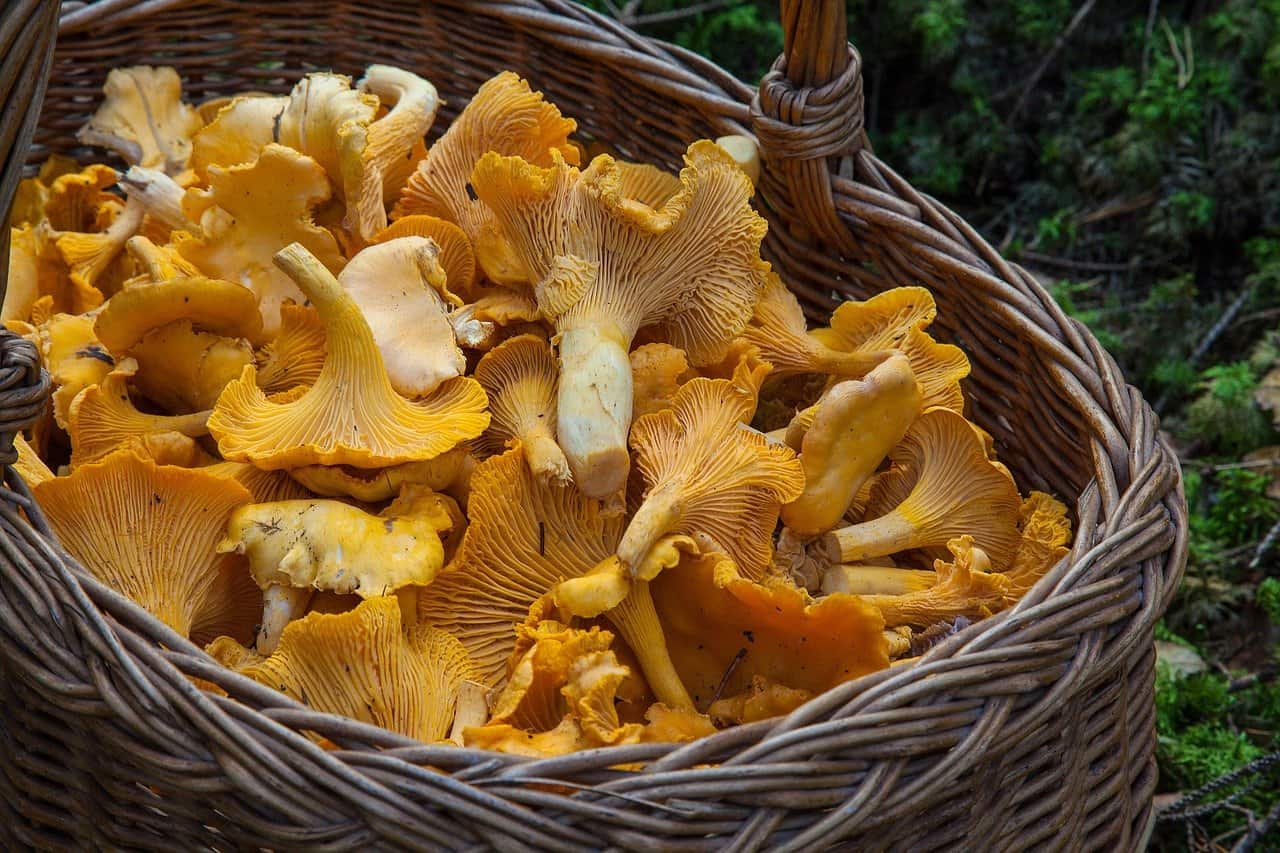
The well-known, flashy yellow Chanterelle mushrooms are highly sought after for their unique flavor: something between peppery and fruity. They are very popular in Europe and North America, and some chefs consider them a delicacy up there with truffles. Cooking them in fat, such as butter, brings out their rich flavor and they make a great addition to sauces, soups, and even souffles.
Charcoal Burner Mushroom

The Charcoal Burner russula mushroom is one of the most common wild-harvested mushrooms in Europe. The flesh is soft with non-brittle gills, and has a mild, nutty flavor. It is a versatile mushroom in the kitchen and, despite it’s softer raw consistency, retains a preferable texture when cooked. It is excellent in a variety of dishes from soups and stews to omelets.
Chicken of the Woods Mushroom
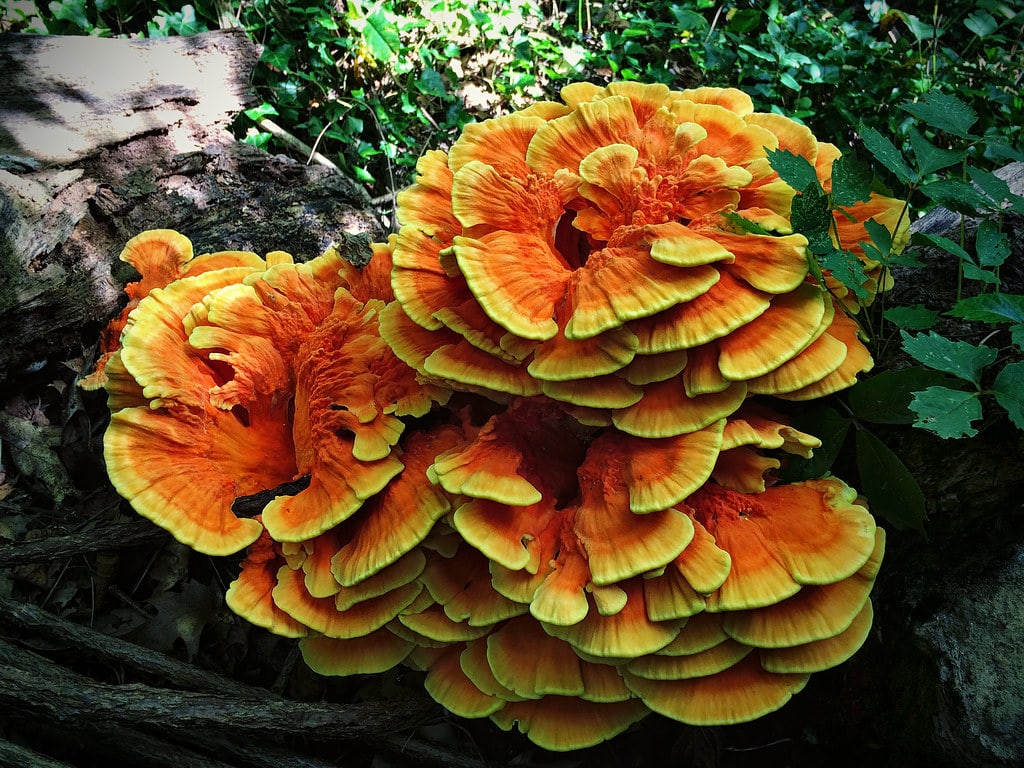
Something between a prop in a fantasy novel and a horror movie, the hilariously named Chicken of the Woods mushroom is found throughout the world. It’s tougher consistency and strange, chicken-like flavor make it an excellent vegetarian replacement for chicken in many dishes. Some caution should be used if you are new to this fungus as allergic reactions are not uncommon. It is best to start with a small portion of young flesh to see how your body reacts.
Common Ink Cap Mushroom
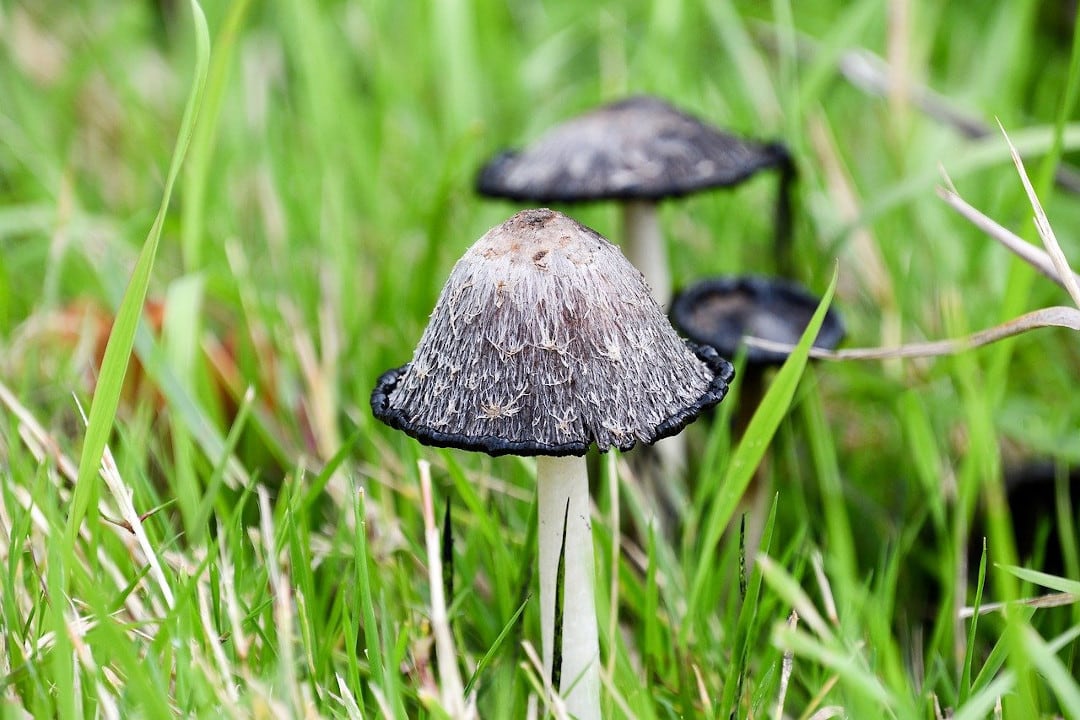
The purplish-blue Common Ink Cap mushrooms are edible in their immature form before their gills turn black. But even when picked at the right time they can pose some dangers, specifically to those consuming alcohol. They restrict the breakdown of alcohol in the liver leading to disulfiram syndrome which causes flushing, nausea, and tingling.
Still, they are prized for their use in mushroom soup and other dishes where excess moisture is not an issue. Just make sure you partake in these meals without any adult beverages to wash them down.
Crab Brittlegill Mushroom
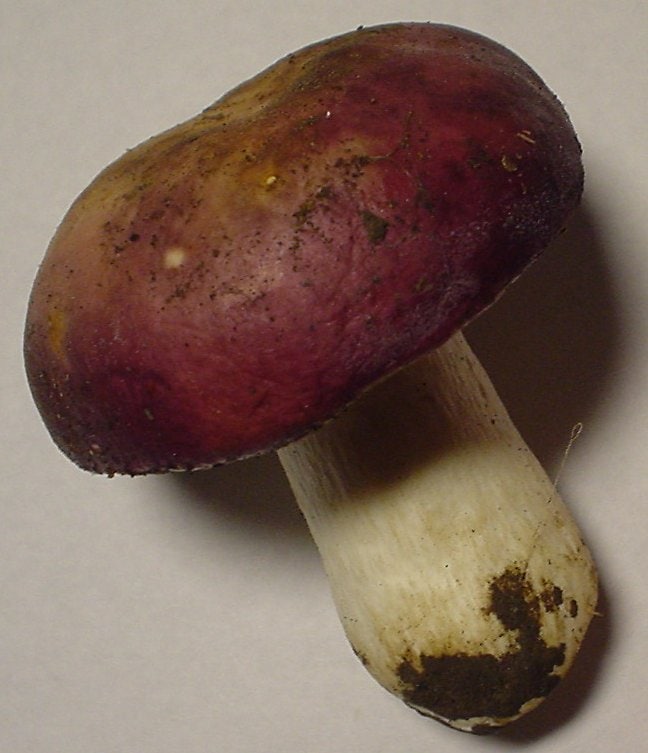
This russula mushroom gets its name from its cooked-crab-like odor when fresh and brittle, bitter-tasting gills. They are common in North American and European coniferous woodlands. Crab brittlegills are one of the most common edible mushrooms of their genius. The seafood odor does persist after cooking which can be a plus for the right dish. More immature specimens have a milder odor and taste that lends itself well to a variety of recipes.
Cremini Mushroom
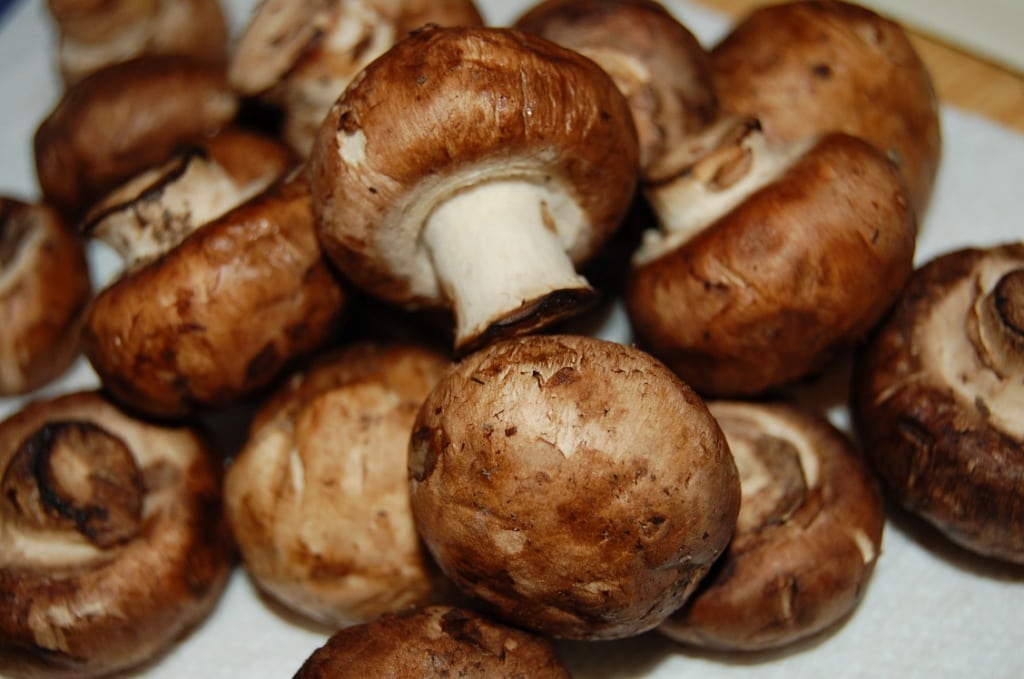
Remember how the original button mushrooms were brown until a unique mutation gave us a white variety? Well, Cremini is the name given to the original brown variety of Agaricus bisporus. Even more confusing, these are actually just the immature form of the very popular portabella mushroom. They are even sometimes sold under the name “baby bella.”
They have a taste that is more complex than a white button but not as nutty as a mature portabella. Like the white variety, they are widely used in savory and spicy dishes.
Dryad’s Saddle

Common across the world, from America and Europe to Australia, the trunk dwelling Dryad’s Saddle mushroom is often easy to find. In the immature form, it has a cucumbery scent and lemon-like flavor. They are delicious when fried up in butter and go well with fish and white meat.
Mature specimens are not toxic, but are tough and, often, maggot filled. If that last part doesn’t scare you, then feel free to harvest these larger caps and boil them to make a tasty broth or soup base.
Enoki Mushroom
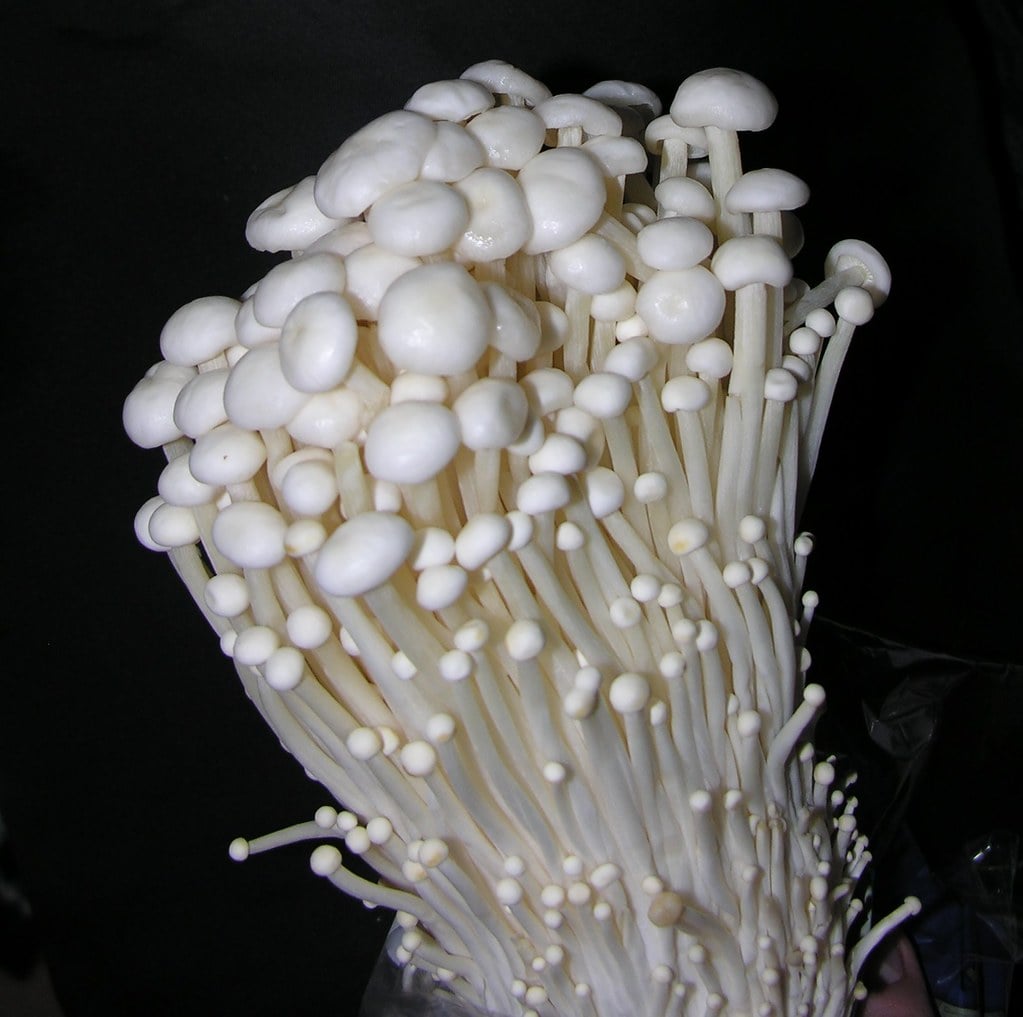
Also call “enokitake,” this common mushroom in Asian cuisine is both cultivated and wild-harvested. The cultivated variety of Enoki mushrooms tend to be light in color with long stems while the wild types are darker and shorter. In either case, this species makes for a great addition to sauces, stir-fries and soups where their naturally slimy texture is more complimentary to the dish.
False Morel Mushroom
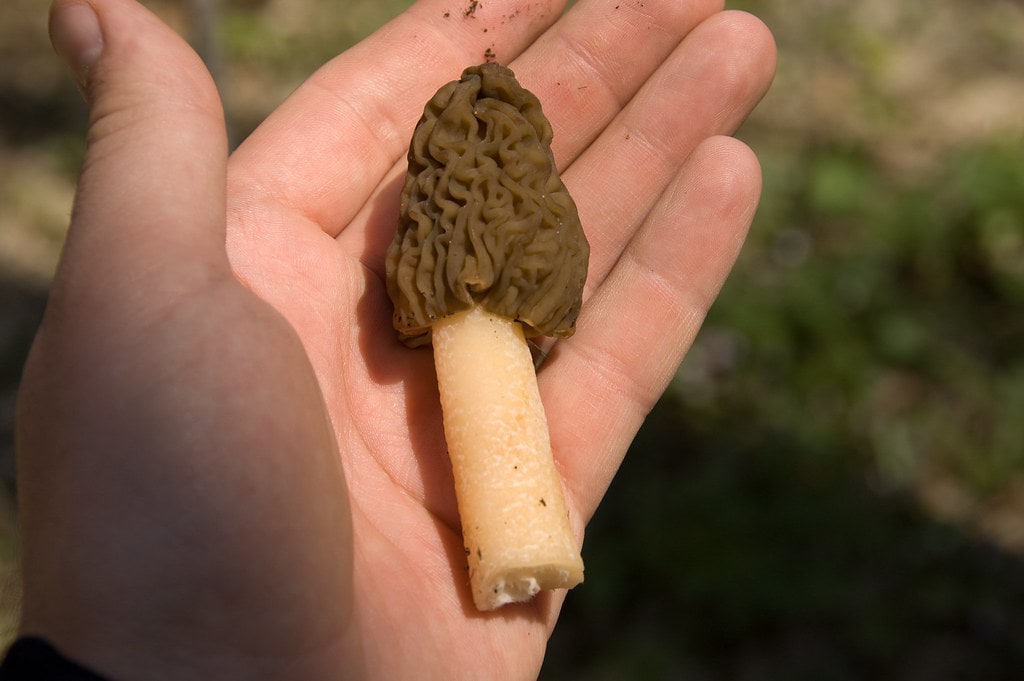
Like the not-false morel mushroom, this odd-looking fungus has a wrinkly, rumply cap but with less defined spaces than a true morel. It is a slight distinction, but an important one, because false morels can be quite toxic. In fact, they are only considered edible after being chopped into small strips and boiled TWICE in a full pot of water.
From the photographer of the image above, Charles Dawley: “Easy to tell the difference between true morel and false. False morel cap is attached to stem up inside the top. True morel the cap and stem are one unit.”
Field Mushroom
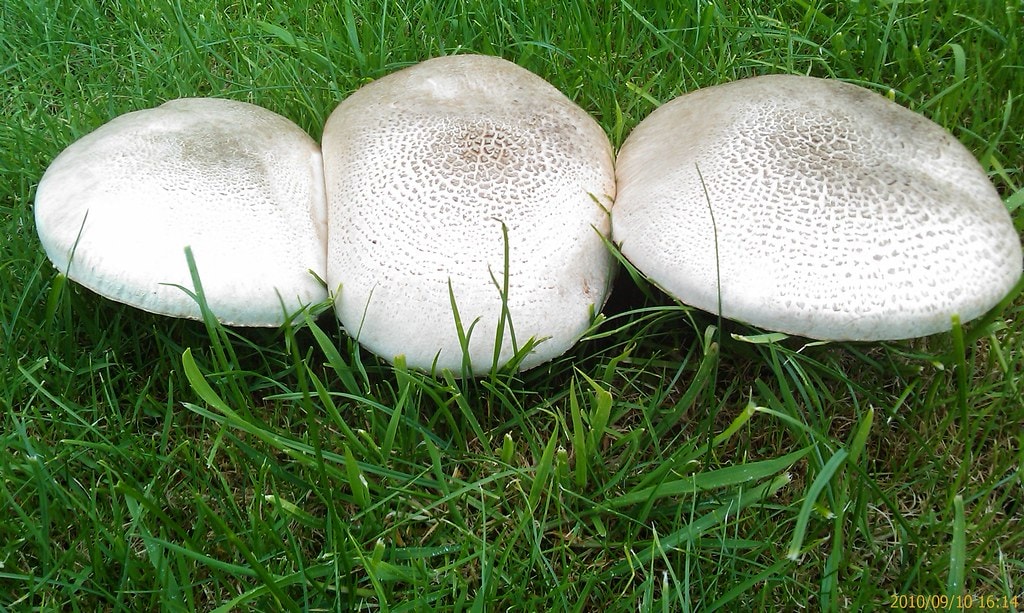
A close relative of the popular button mushroom, the wild field mushroom commonly grows in meadows in Europe and America. Also like its more popular cousin, it can be enjoyed sauteed, cooked in sauces, or as a raw addition to salads. While abundant in the right conditions, the short life cycle of this fungus makes it difficult to harvest in large quantities.
Giant Puffball Mushroom
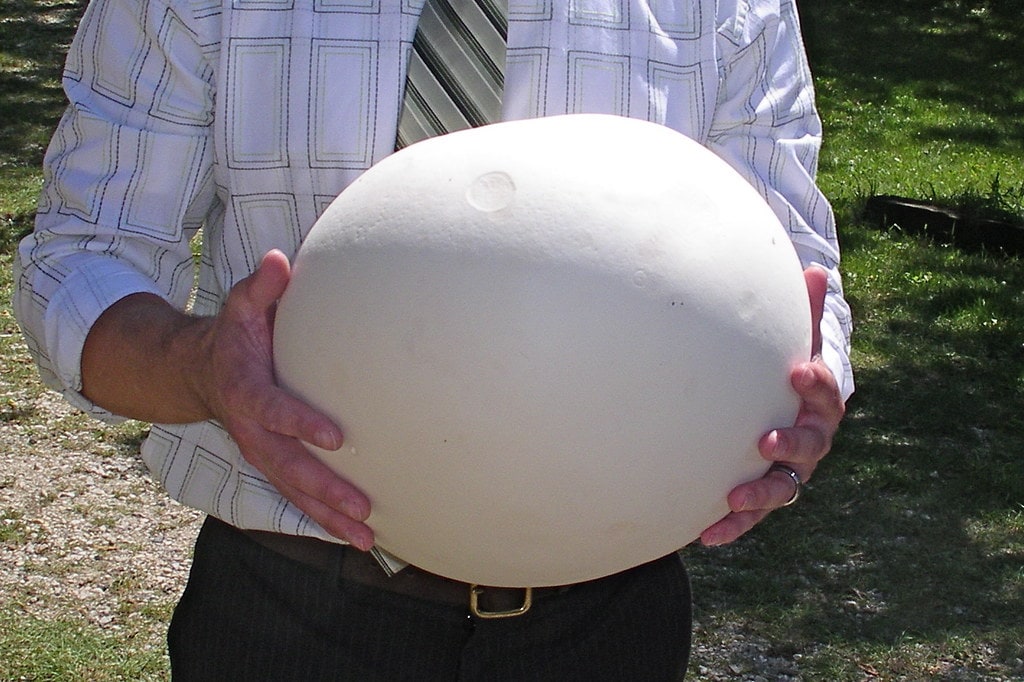
This unusually large mushroom has a lot of party tricks. The Giant Puffball mushroom has historically been used to dress wounds and is the main source of the mucoprotein, calvacin, which is used as an antitumor treatment. As a food, these mushrooms must be used only in the immature state when the flesh is white. More mature specimens contain toxic spores that turn the flesh yellow and then brown.
Green Cracking Russula
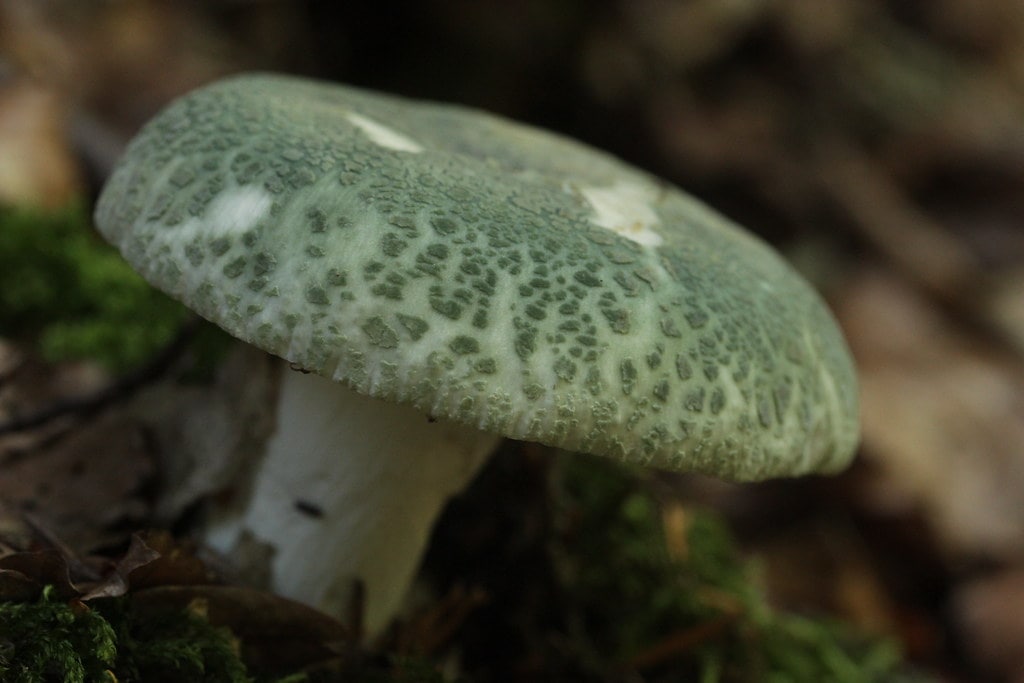
This large Green Cracking Russula is popular in both Spain and China. It has a unique green spotted cap and wide diameter. The flavor can be very mild, nutty, or even fruity. The large size makes these caps perfect for grilling and they were traditionally prepared by toasting them over an open flame with a sprinkling of salt.
Gypsy Mushroom
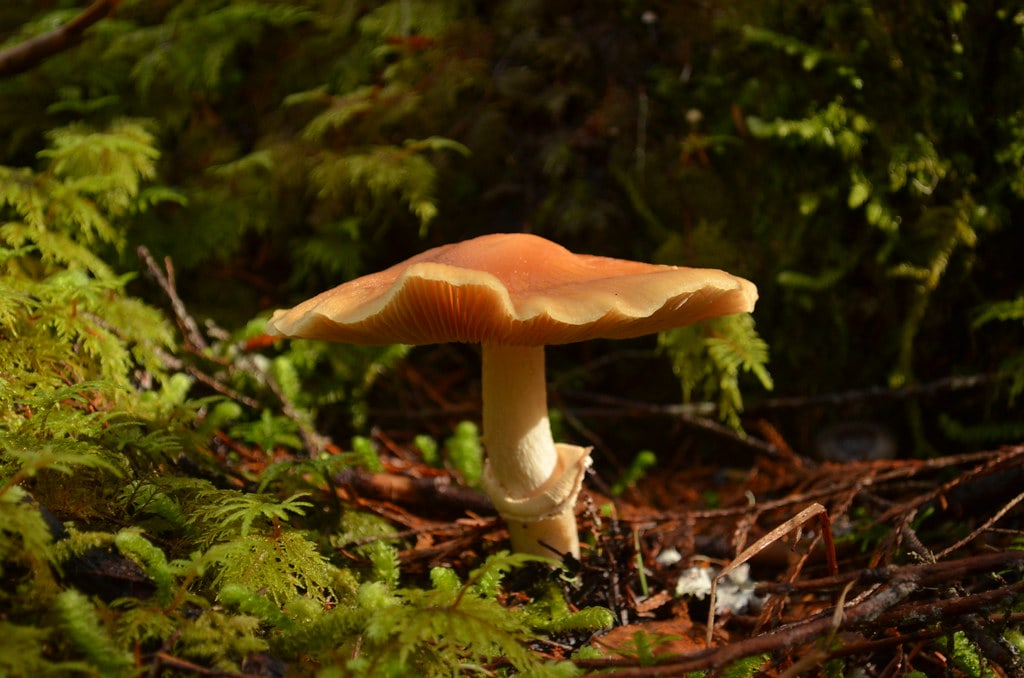
The Gypsy mushroom grows in many northern latitudes and is available commercially in Finland. In most other locales, it must be wild-harvested. When eaten raw, it has a slightly bitter flavor, but a very mild flavor when cooked. Because they can be challenging to find in larger quantities, they are often prepared alongside mushrooms with a more distinctive flavor profile.
Hedgehog Mushroom
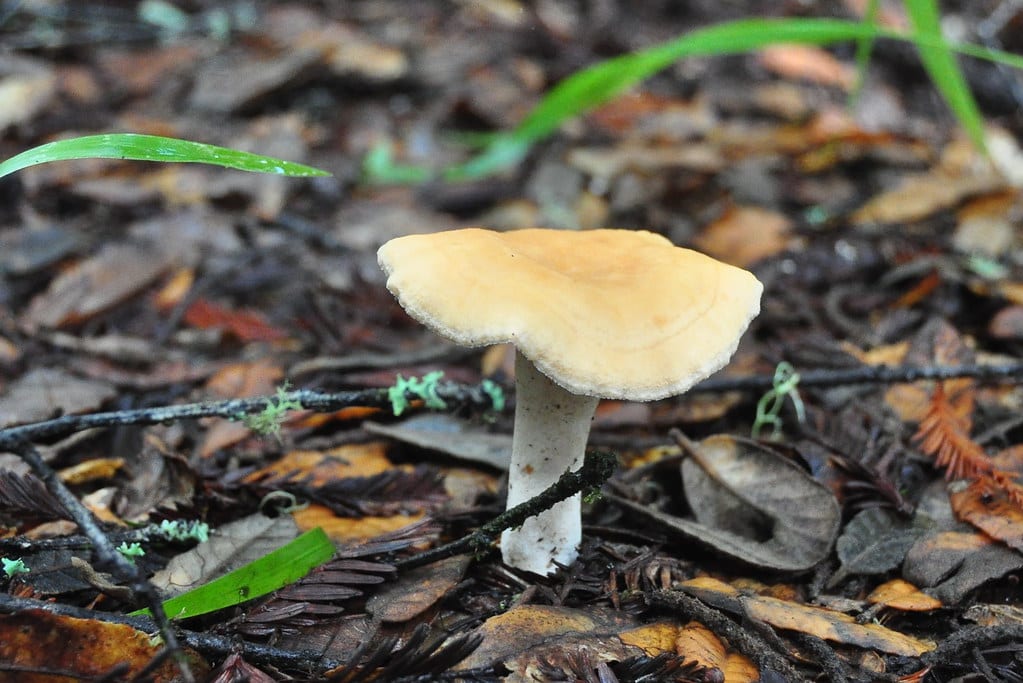
This dainty, golden mushroom has unique quill-like gills that are easy to identify. Hedgehog mushrooms have a flavor similar to chanterelles but with smokier undertones. Their texture is crunchier than other mushrooms, especially after sauteing in a little butter or oil. More mature specimens have a slightly bitter taste, but this disappears with adequate heat.
Honey Fungus Mushroom
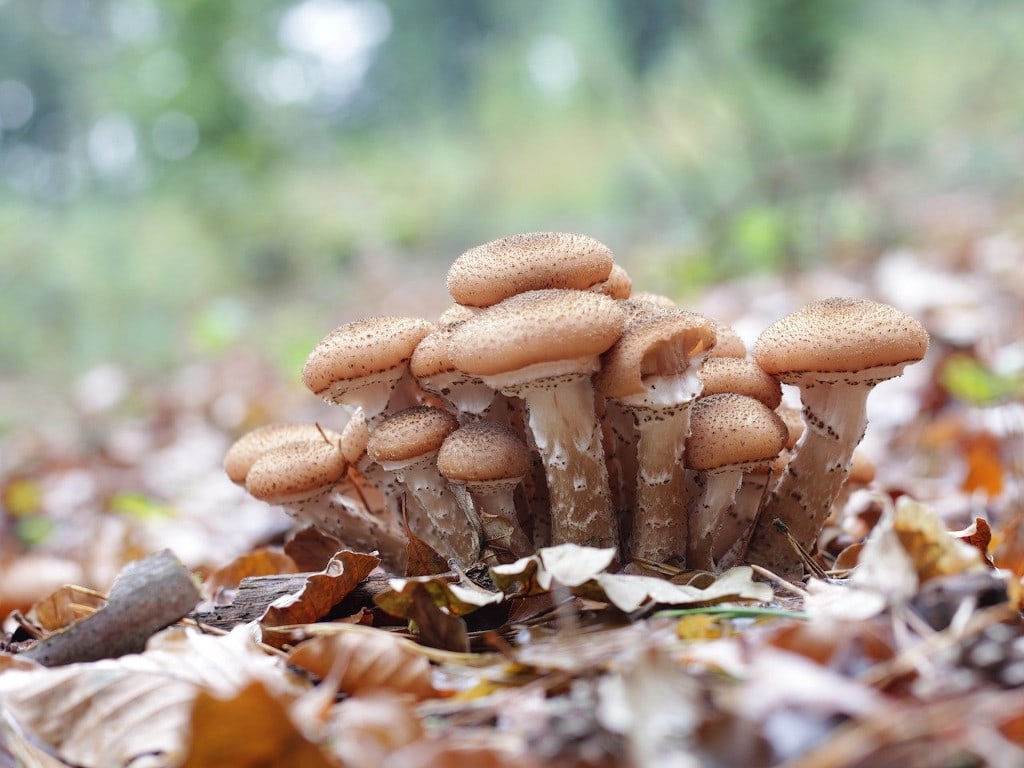
Largely regarded as one of the best wild mushrooms in the world, the small, clustering caps of the Honey Fungus mushroom are on every fungus hunter’s wishlist. In their raw form, they are somewhat poisonous and, in any form, can cause problems when combined with alcohol. However, when prepared carefully, the nutty, rich flavor of these mushrooms is well worth the risk.
King Bolete Mushroom

Another well-known porcini, the King Bolete (a.k.a. Penny-bun Bolete) is a large mushroom celebrated in the culinary world for its excellent, nutty taste and versatility in the kitchen. The younger caps are the most sought after for their smooth, creamy texture, but even older ones can be dried and used in a variety of meals. This fungus is native to the northern hemisphere but has since been introduced in Australia, South Africa, and other southern latitudes.
King Oyster Mushroom
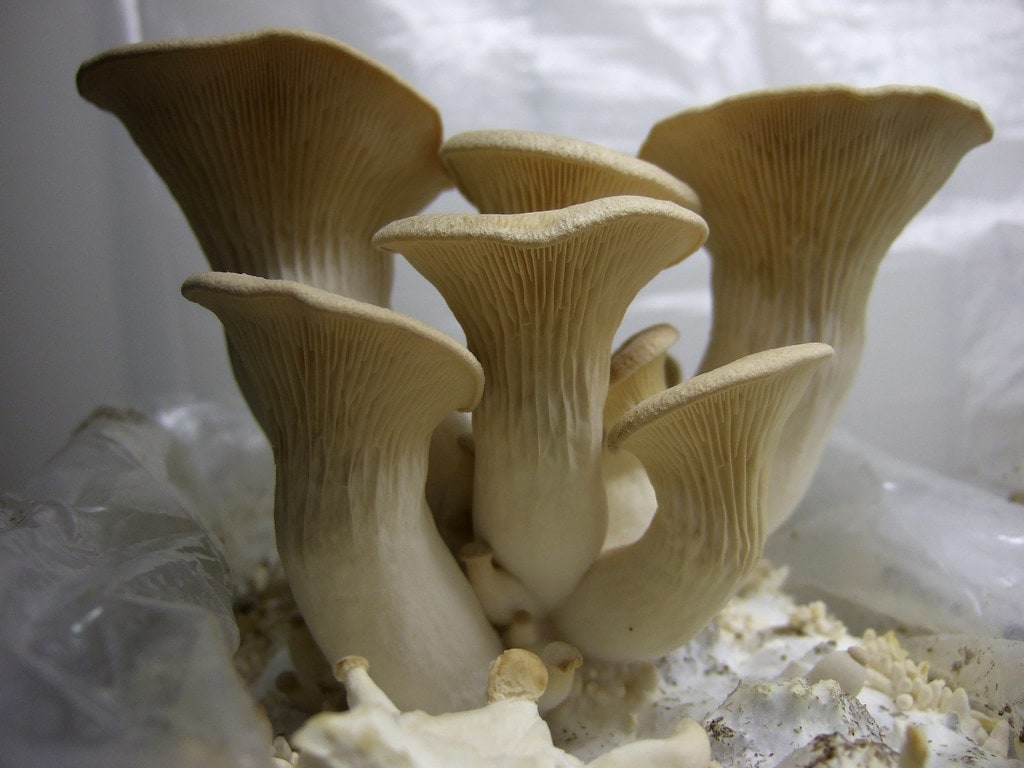
The largest species of oyster mushroom, the trumpet-shaped King Oyster mushroom has a wide base and inverted cap. The flesh is meaty and, despite having little taste in its raw form, develops a wonderful umami flavor when cooked. But the talents of this funny-shaped mushroom go beyond what it brings to the kitchen. It has also been shown to have immune system stimulating benefits, cholesterol-lowering effects, and can even be helpful in fighting intestinal parasites.
Lion’s Mane Mushroom
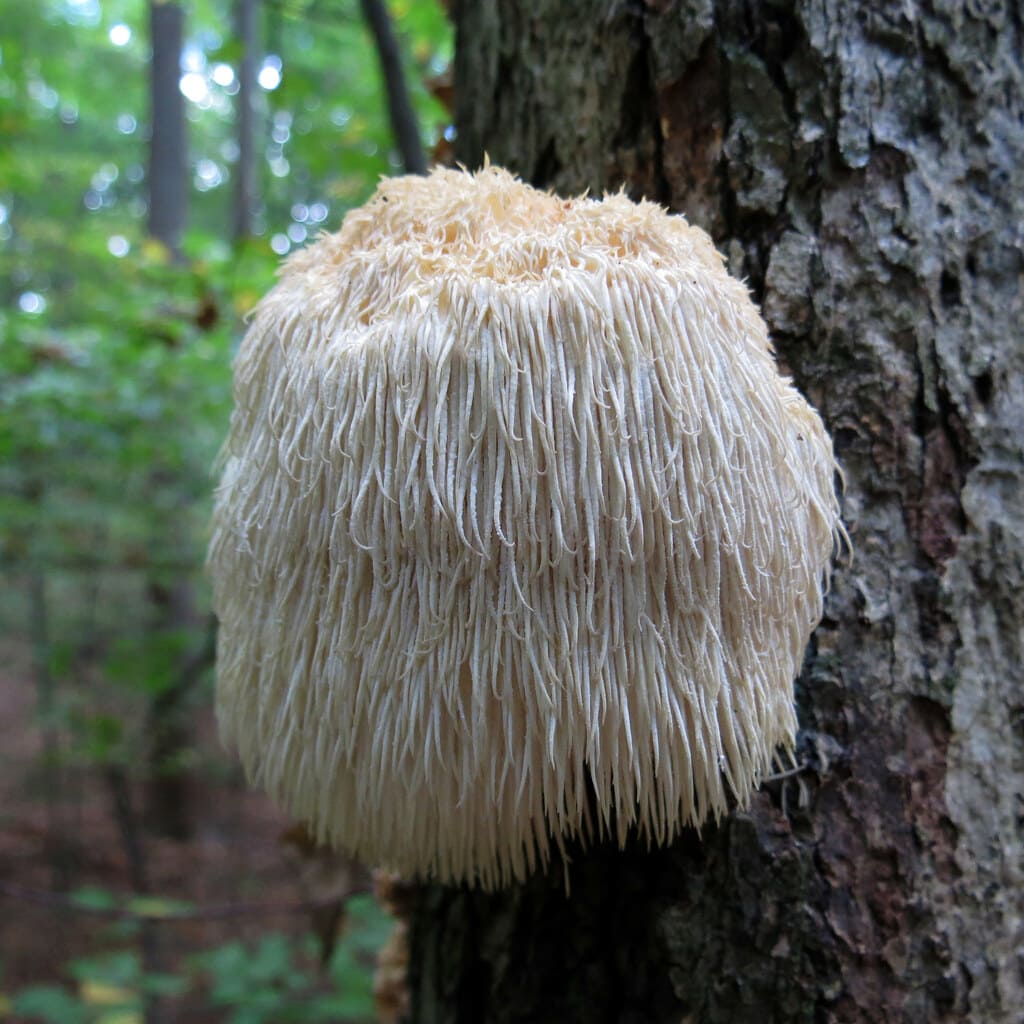
While popular for their culinary uses, Lion’s Mane mushrooms, which develop long teeth-like gills resembling a mane, are more well known in the medicinal mushroom world. For the former, they offer a unique lobster-like flavor and have become increasingly popular among American chefs. In the latter, they are celebrated for containing a long list of phytochemicals that many believe to have healing properties.
Maitake Mushroom
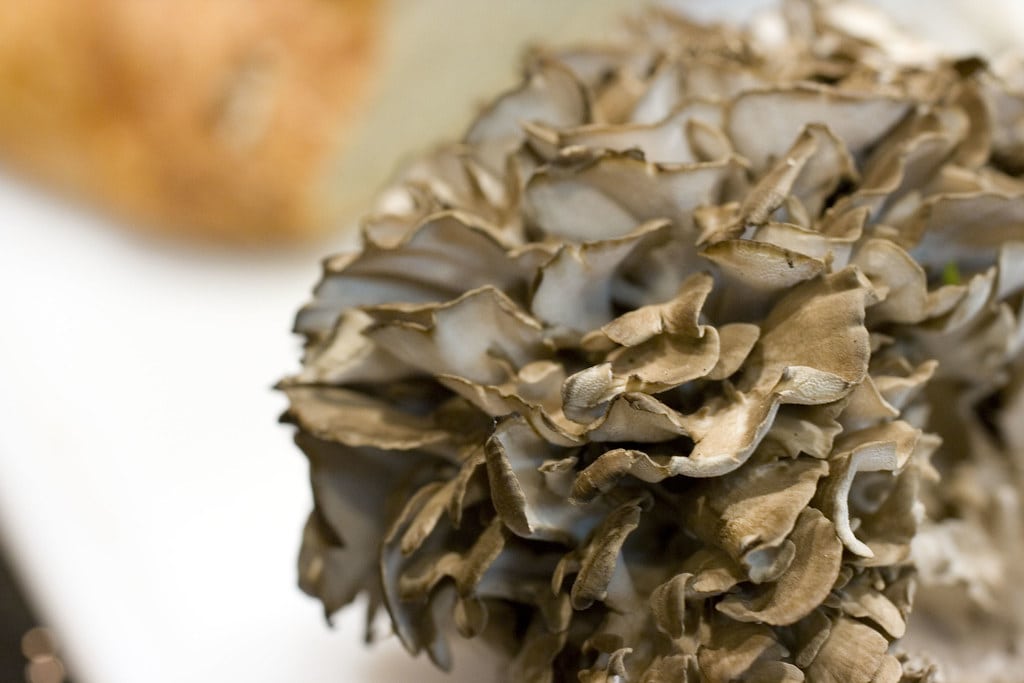
The strangely-shaped, ribbony Maitake mushroom is a staple in Asian cooking. The name comes from the Japanese word meaning “dancing mushroom.” It is also commonly known as hen-of-the-woods. The flavor of the maitake is deeply earthy and rich, making it a great choice for meals with complex flavors that might overpower the taste of milder mushrooms.
Morel Mushroom
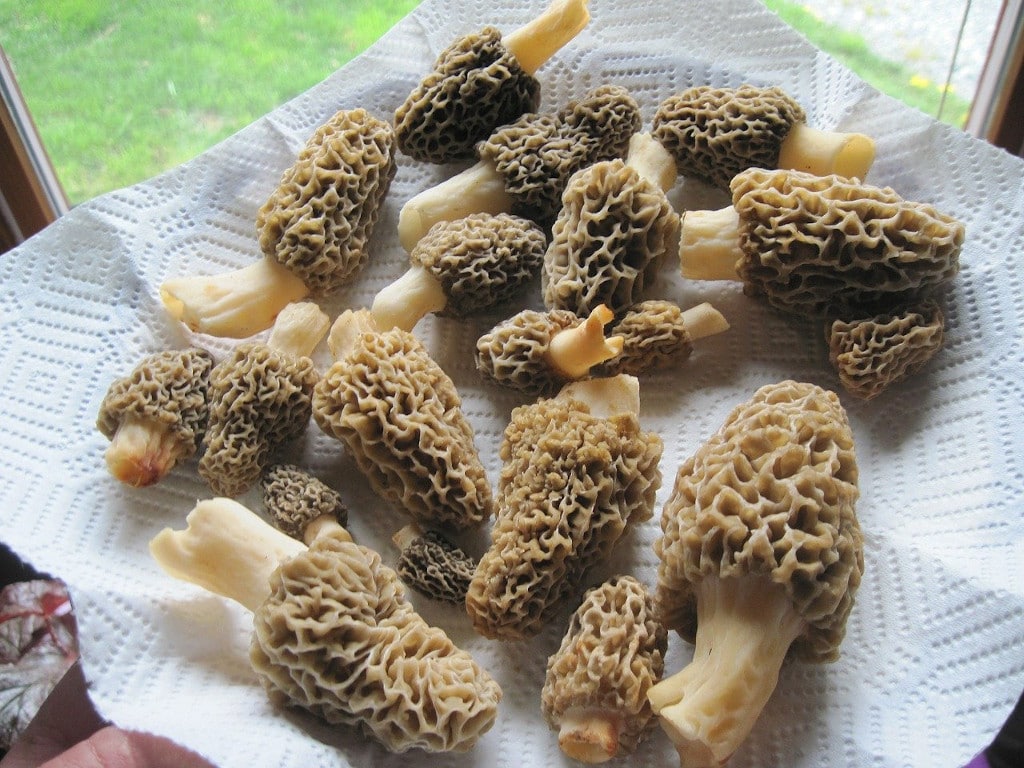
Easily one of the most prized edible mushrooms in the world, this honey-combed capped fungus has become its own multi-million dollar enterprise. Because they’re difficult to cultivate, the majority of morels used in restaurants have to be wild-harvested—a task that can net the hunter a pretty penny.
Morel mushrooms have a rich flavor that goes well with a wide range of dishes and are often served alongside meats or inside ravioli. However they are prepared, they must be cooked to neutralize the naturally occurring toxins.
Matsutake Mushroom

The prized but rare Matsutake mushroom is popular in many eastern countries. It has a thick, tall base with an undersized cap and a uniquely spicy aroma. Because they prefer to grow in very specific conditions in certain types of forests, they are not always easy to find. Recently, pine parasites and continued deforestation have greatly reduced the number of matsutakes harvested each year, which has driven up the price exponentially.
Oyster Mushroom

Oyster mushrooms are well known throughout the world but most popular in Asian cuisine. They were first cultivated during World War I as a ration food but are now considered a prized ingredient in many dishes and sauces. They can also be served on their own and have a mild flavor with hints of anise or bitter almond. A rarity among mushrooms, these fungi are known to feed on certain types of worms and even bacteria.
Parasol Mushroom
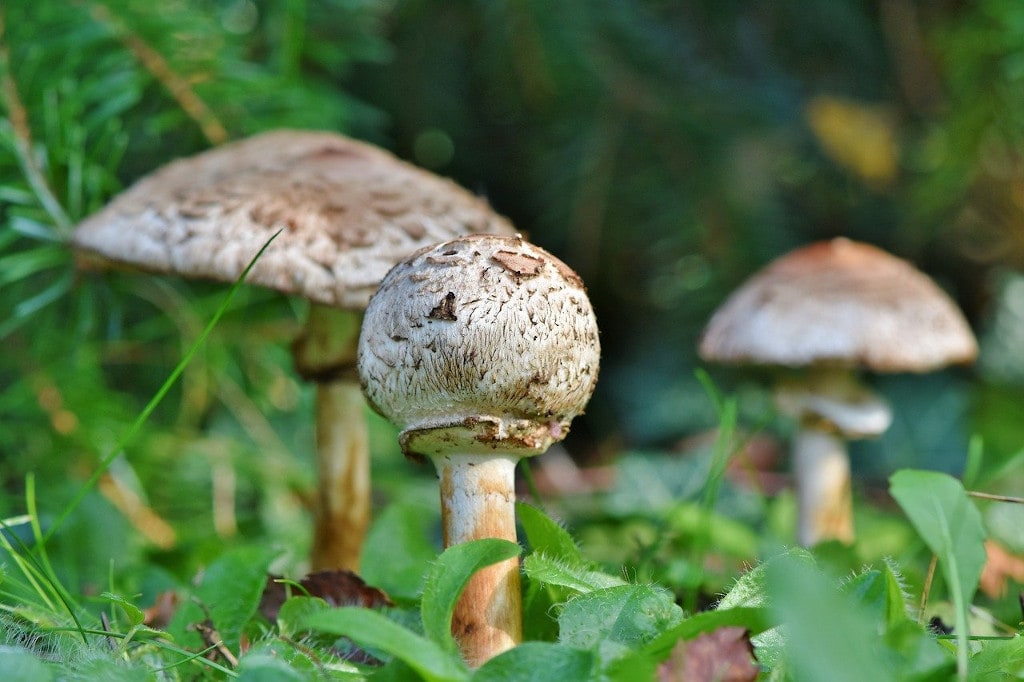
As the name suggests, the large Parasol mushroom closely resemble a wide parasol when fully matured. The thin, tall stalk, and flat, scaled cap make them easy to identify. They are best if picked when the cap is still rounded like a “drumstick” or before it has fully flattened out. They are popular for their size and availability more so than any unique tasting notes, but they still make a great meal, especially when battered in bread crumbs and fried.
Portobello Mushroom
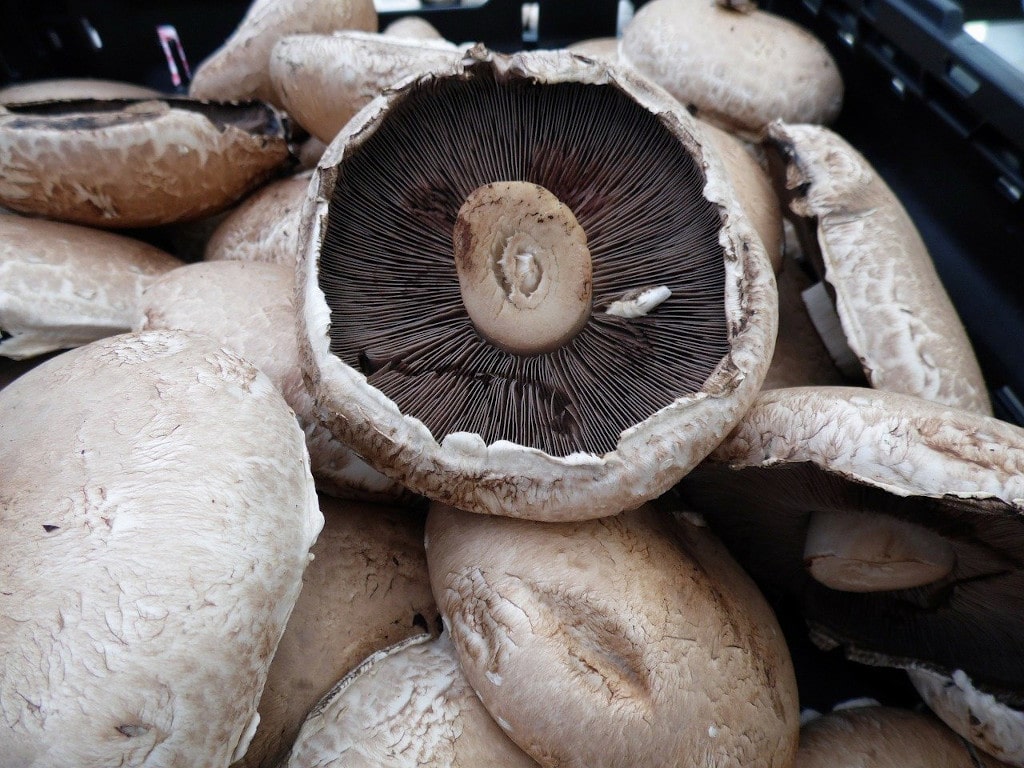
Perhaps the second most well-known mushroom in the West, the portobello (also called portabella or portabello) is actually just the mature form of the most well-known—the button (or cremini) mushroom. When allowed to reach full size, the Agaricus bisporus loses much of its moisture and gains more flavorful, earthy notes. This texture and taste make the portabella an excellent choice for replacing meat in vegan meals.
Red Pine Mushroom
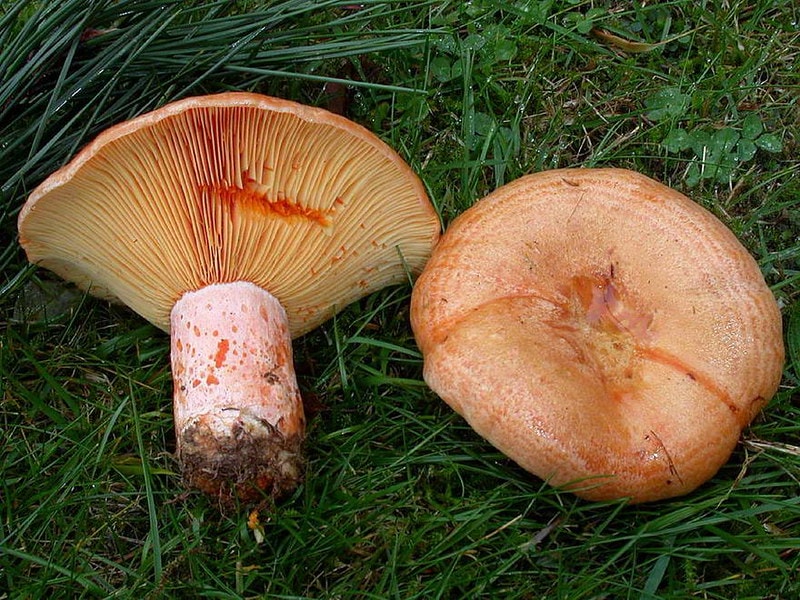
The Red Pine mushroom is a milk cap species native to Europe, but it’s been introduced widely, often by hitching on transplanted conifers. The unique orange coloring and slightly inverted cap make distinguishing it from other fungi fairly easy. It is the most prized wild mushroom in Spain where it is cooked exclusively in olive oil but can be found listed in traditional recipe books from the Eastern Block and India, as well.
Red-Capped Scaber Stalk Mushroom
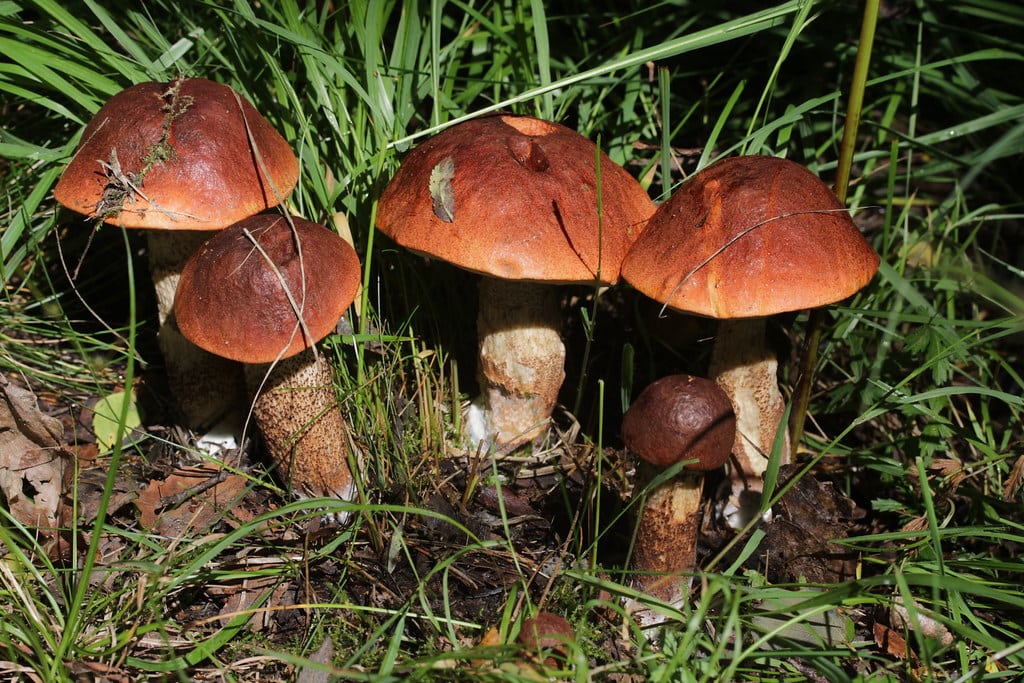
With a rosy-red cap and reddish-black speckled stalk, this beautiful mushroom is on many fungi hunters’ wish list. The Red-capped Scaber Stalk mushroom is commonly consumed in Eastern Europe and has been for centuries. However, there is some recent controversy about the true edibility of these fungi. Some poisonings have been reported and most hunters agree that they should only be consumed when fully cooked. One likely explanation seems to be that the oranger variety of this Leccinum is more toxic than the red-capped specimens.
Reishi Mushroom
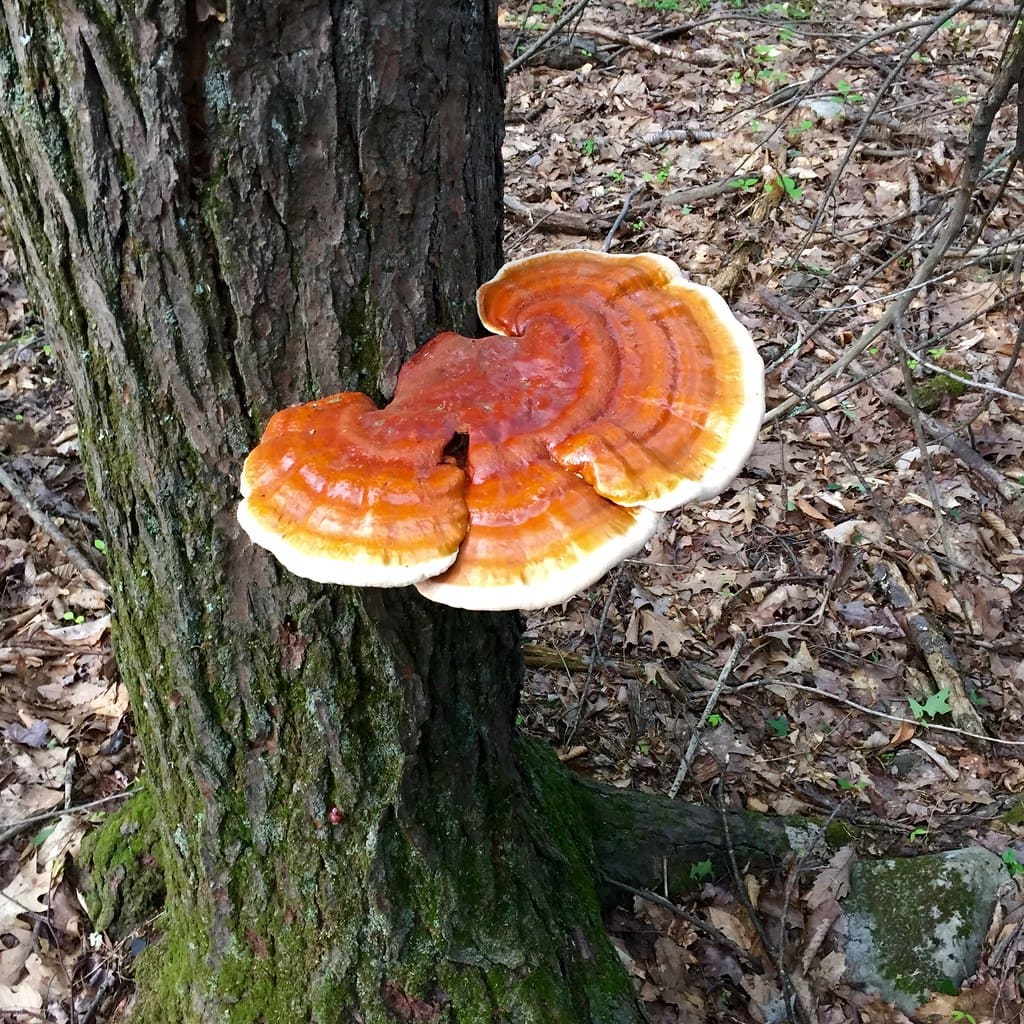
While completely edible, this deep-red, fan-like Reishi mushroom is most often consumed as a supplement in powder form, not used in cooking. It has long been utilized in Chinese medicine where it is believed to help with memory, open up energy channels, and even allow for immortal life. While modern science has yet to confirm these specific claims, there has been some evidence that reishi can support cancer patients during treatment and that supplementing can supply the body with important phytochemicals that support overall health.
Shimeji Mushroom
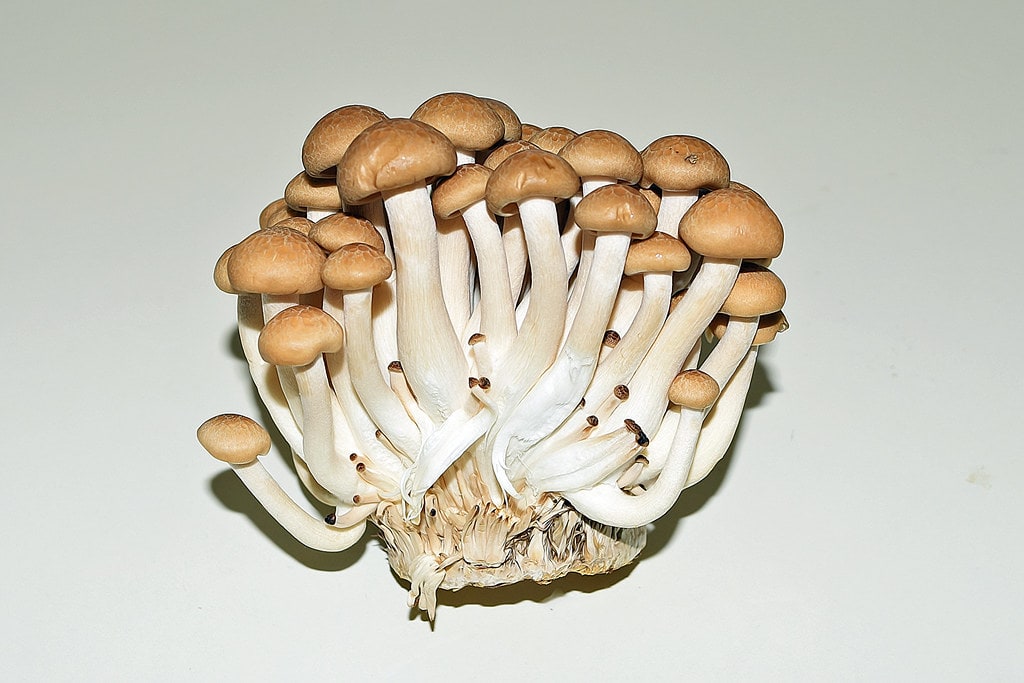
The Shimeji mushroom family comes in a variety of shapes and sizes. All have a bitter flavor when raw and can cause digestive upset in this form. However, when cooked fully, that bitterness gives way to a nutty, umami flavor and a pleasing firm and crunchy texture. They are native to East Asia and commonly used in Japanese cooking.
Shiitake Mushroom
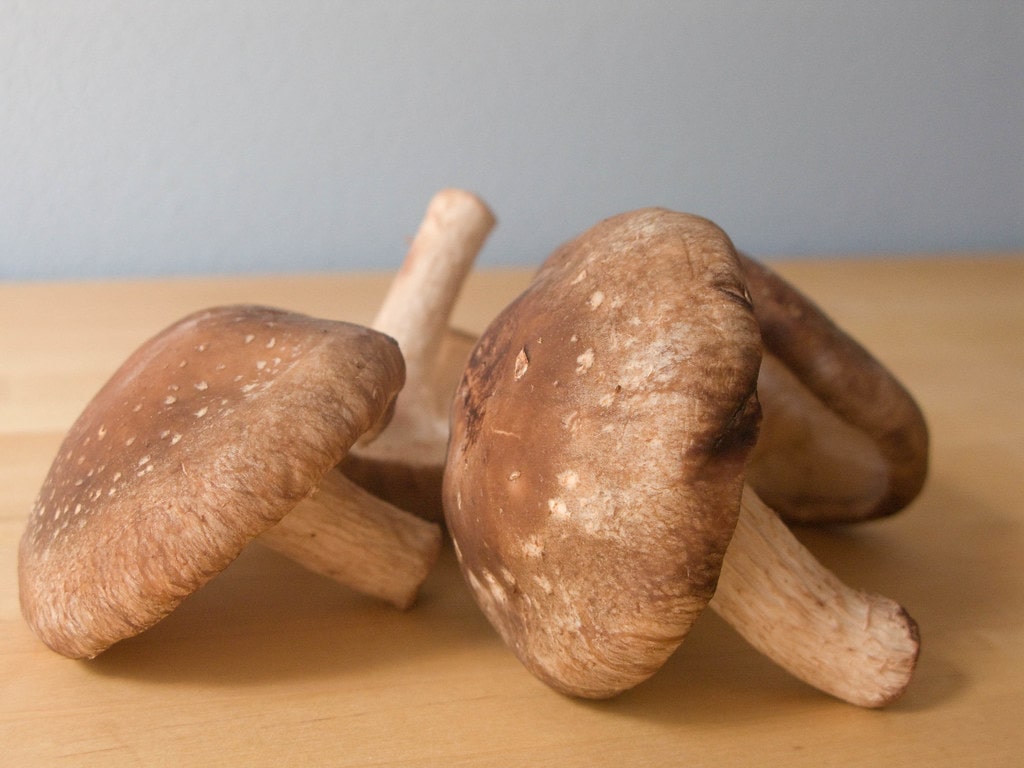
Shiitakes are well-known mushrooms that have long been cultivated and used in China and other East Asian countries, but have more recently become somewhat of a staple in Western kitchens. These large, brown mushrooms have an umami flavor and, when cooked, develop a pleasing, velvety texture. The stems are often discarded due to their tougher consistency, but, when cooked longer than the caps, develop a nice chewy texture.
Slippery Jack Mushroom
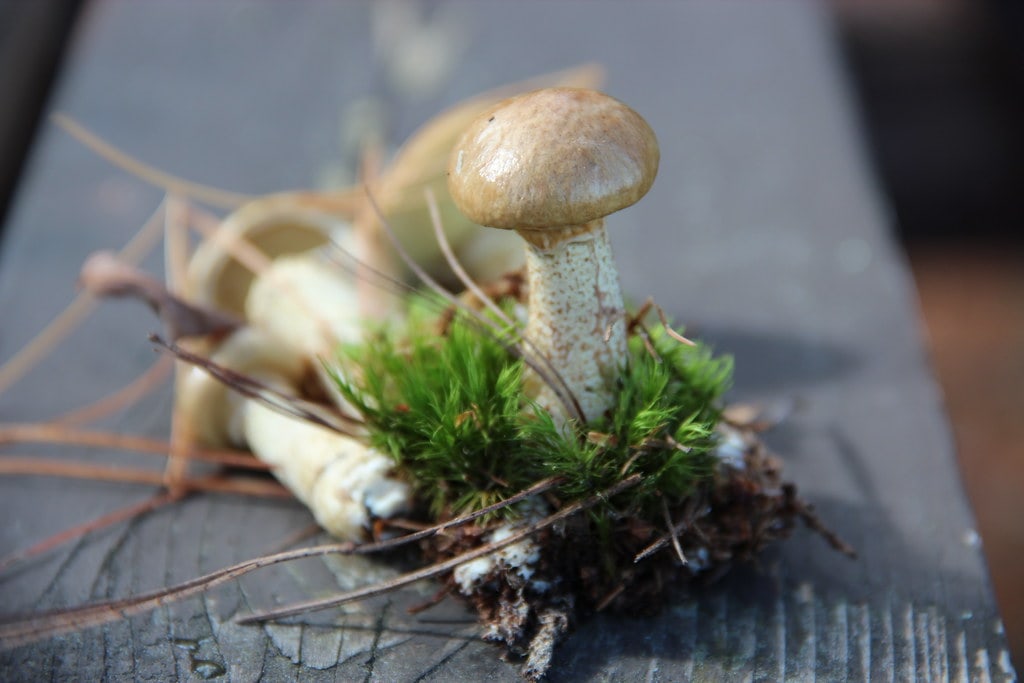
The Slippery Jack mushroom is a bolete variety that’s commonly found in pine forests and is notable for the cap’s sticky or slippery slime coating. It is a thick, meaty mushroom, but considered by most to be inferior to other types of boletes often found growing in the same areas. The Slovacks, however, still consider this wild mushroom a prize and use it in a number of traditional dishes.
Straw Mushroom
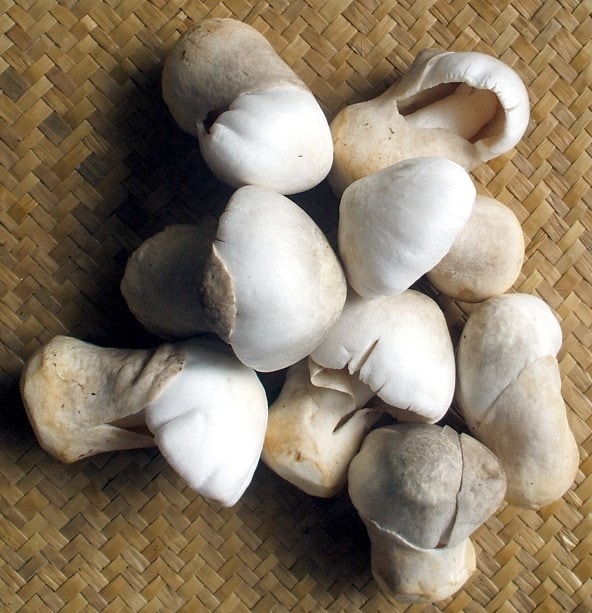
These egg-shaped gray mushrooms are named for the material in which they are cultivated. Straw mushrooms are popular in Asian cuisine and are often sold fresh in Eastern countries. When sold in the west, they are most likely to be canned or dried. They have a slippery texture when cooked and a very mild flavor.
Wood Blewit Mushroom
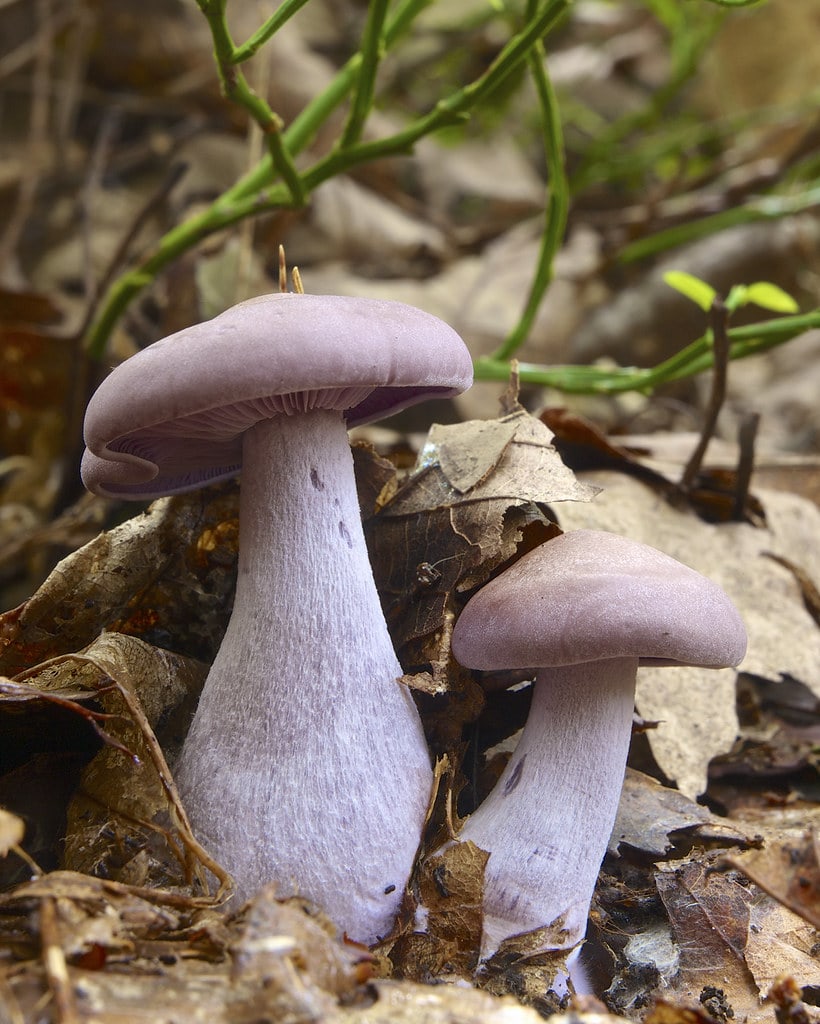
Wood Blewit mushrooms are a large, wide-capped variety native to Europe and North America. Despite being cultivated in many European countries, there is still some question as to their edibility. It is not uncommon for people to have an allergic reaction to these mushrooms when they are eaten raw. But even when cooked, some especially sensitive people may react to them.
Wood Ear Mushroom

The Wood Ear mushroom is a brown, somewhat translucent mushroom that’s much more popular in Eastern cooking than in the West. It has an odd, rubbery taste and texture with a notably bland flavor. It is not edible when raw and takes a relatively long time to cook through. Despite all these drawbacks, it is a popular ingredient in soups and Asian recipes that combine multiple mushroom species.
Yellow Knight Mushroom
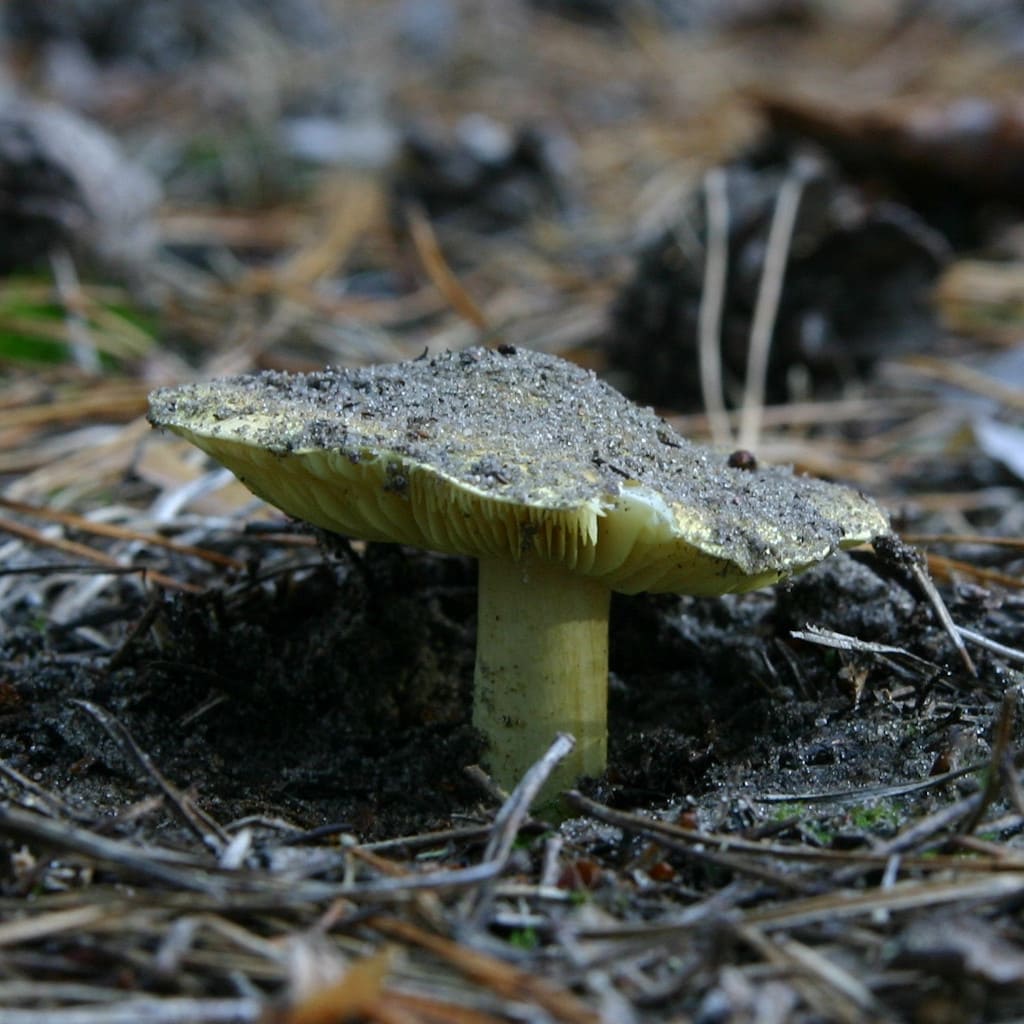
The chunky Yellow Knight mushroom has a wide, flat top and thick stock. It is commonly gathered and consumed in Europe and is described as having a delicate yet rich flavor. Surprisingly, given its popularity, cases of poisoning are not unheard of. Recent research suggests that this mushroom does contain poisonous properties and most fungi hunters now agree that it should not be consumed frequently.
Are Mushrooms Healthy?
Aside from the potential toxins and allergic reactions possible with a handful of edible mushrooms, these friendly fungi are actually quite good for you. They are packed with nutrients and unique phytochemicals that are not readily available in vegetables, fruits, or meat.
They are a naturally fat-free food, are high in fiber, and contain a number of important antioxidants. B vitamins, copper, and potassium are all plentiful in mushrooms of various species.
Many mushrooms are regarded as medicinal due to their unique makeup of phytochemicals–compounds that plants and fungi make in order to fight disease and pests. Just as these phytochemicals protect the health of the mushroom, they can also help protect humans from disease, infection, and some types of cancer.
What Exactly Is a Mushroom?
You know a mushroom when you see it (usually–I’m looking at you cauliflower mushroom!). But do you actually know what qualifies a mushroom as a mushroom?
Technically speaking, a mushroom is the reproductive organ of a fungus. Not all fungi produce mushrooms. And not all fungi that do produce mushrooms are closely related.
You can think of a mushroom as being similar to a flower; it is a part of the fungus, not the entire organism.
Many mushrooms form in the typical “mushroom” shape with a tall stem and umbrella-like cap. But others are far stranger looking. The fleshy steps that grow on tree trunks are technically mushrooms, as are the coral-like “bleeding” blobs of the devil’s tooth mushroom.
How Many Edible Mushrooms Are There?
There are over 10,000 species of fungi that produce mushrooms. These species can be broken down into three categories: edible mushrooms, magic mushrooms, and poisonous mushrooms.
Magic mushrooms, the least common type, have hallucinogenic properties. Psilocybin, the psychedelic compound in hallucinogenic mushrooms, has mind-altering effects that are highly influenced by a person’s mental state. These mushrooms grow wild in many areas but are considered a schedule 1 drug in the United States.
Many poisonous mushrooms are known to exist. Their effects range from mild gastrointestinal discomfort to death. Because dangerous mushrooms can look very similar to edible varieties, it is important to correctly identify any wild-harvested mushrooms before adding them to your favorite meal.
Technically speaking, a mushroom falls into the edible category if it can be eaten without causing psychological changes or harm to the body. This group makes up the vast majority of known mushrooms, however, most are too bitter, tough, or slimy to be used in cooking. As we saw above, many mushrooms that are edible are only edible during certain life stages or after being cooked.
Our Favorite Mushroom Recipes
Are you craving some delicious sauteed mushrooms yet?
Here are some of our favorite mushroom-centric recipes. Try substituting in one of the lesser-known edibles from the list above to elevate any of these dishes to the next level
